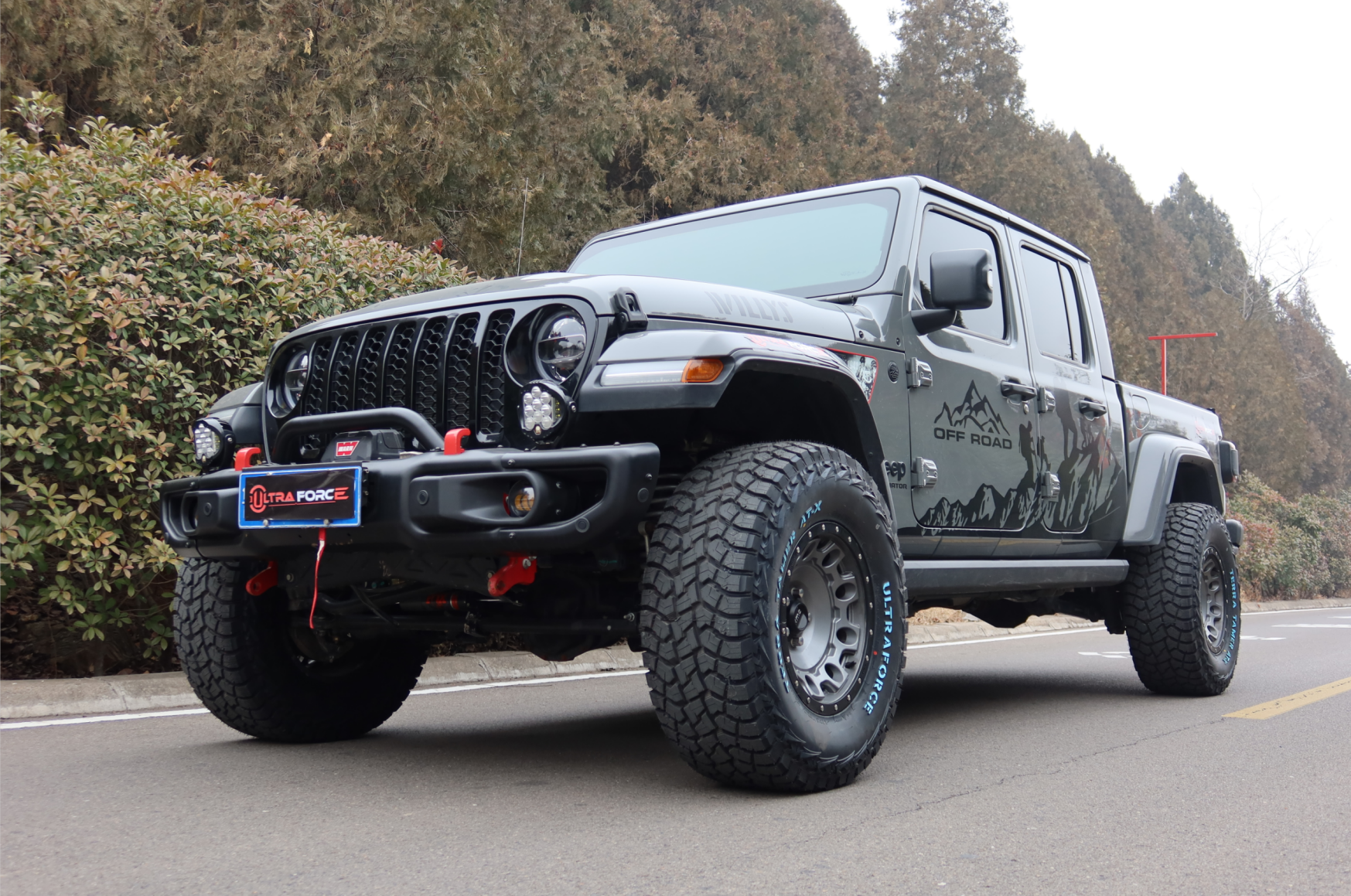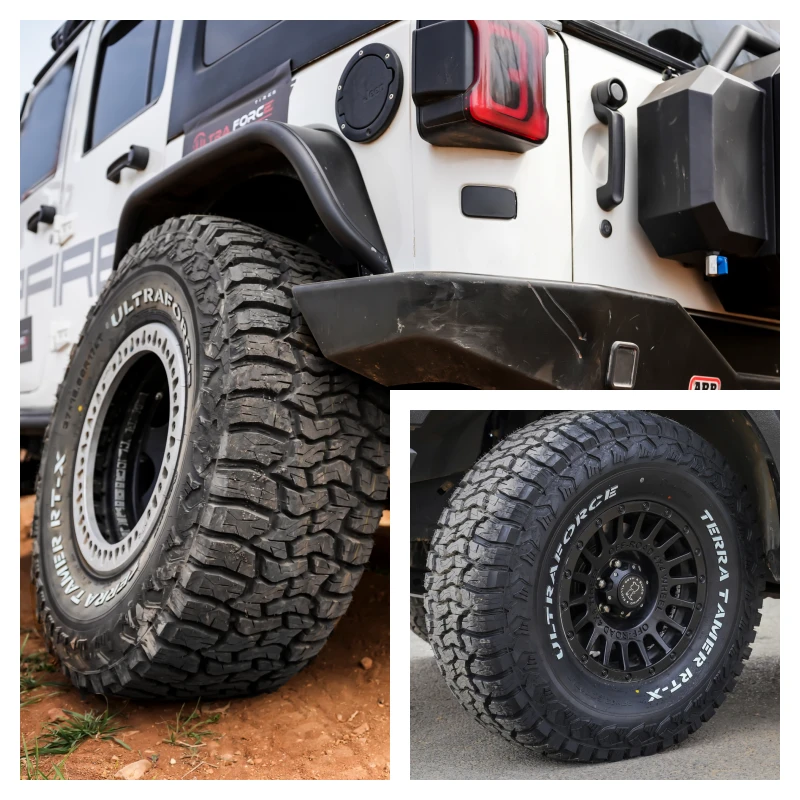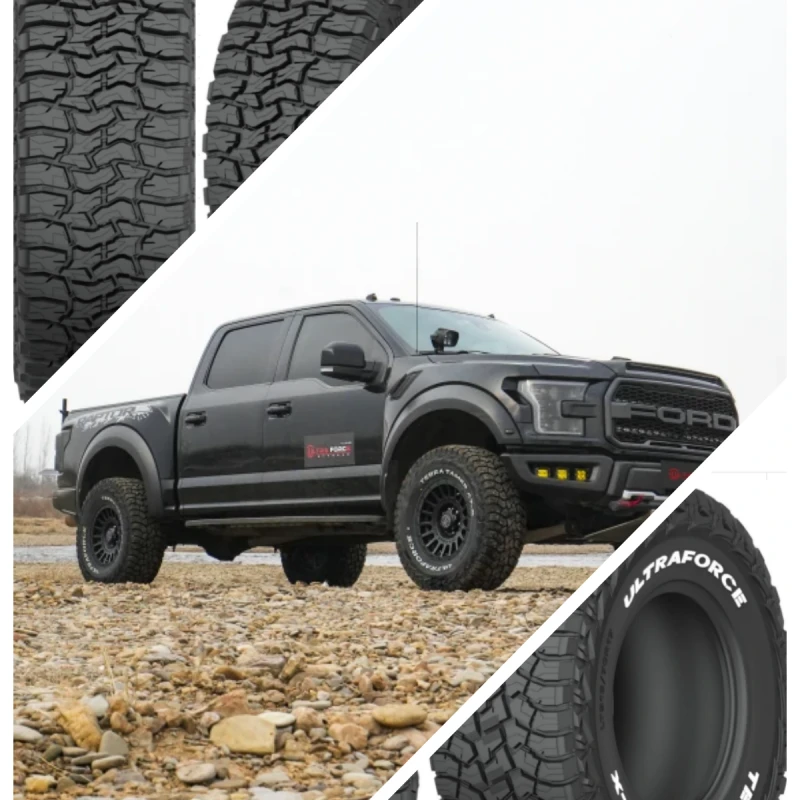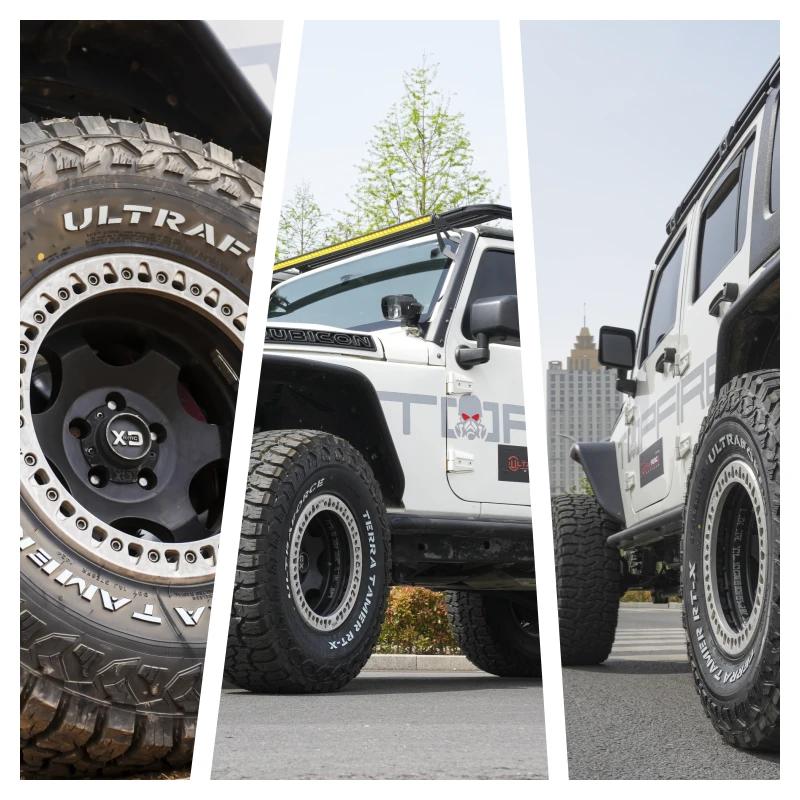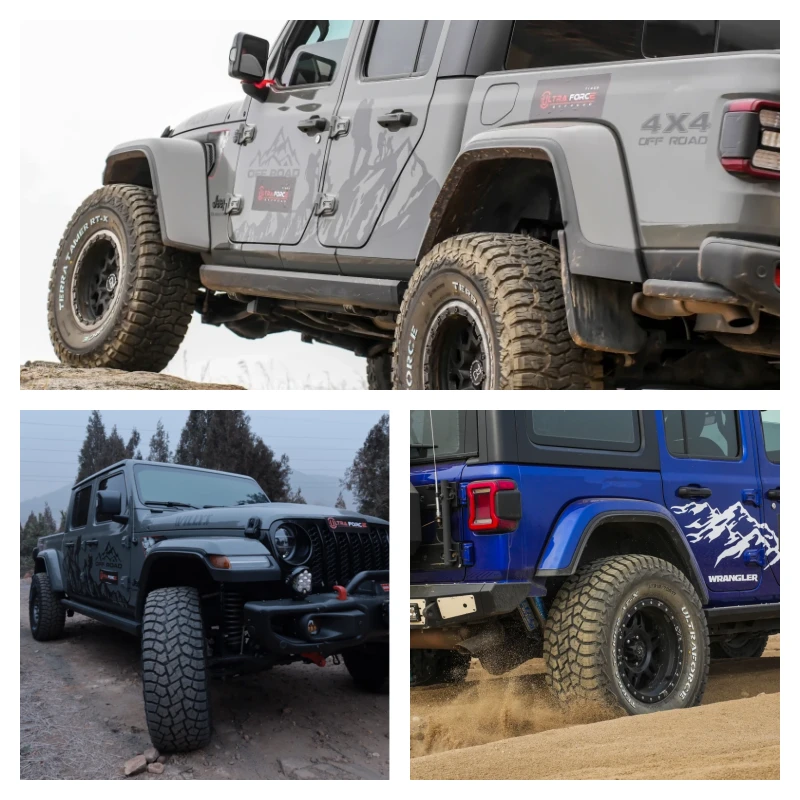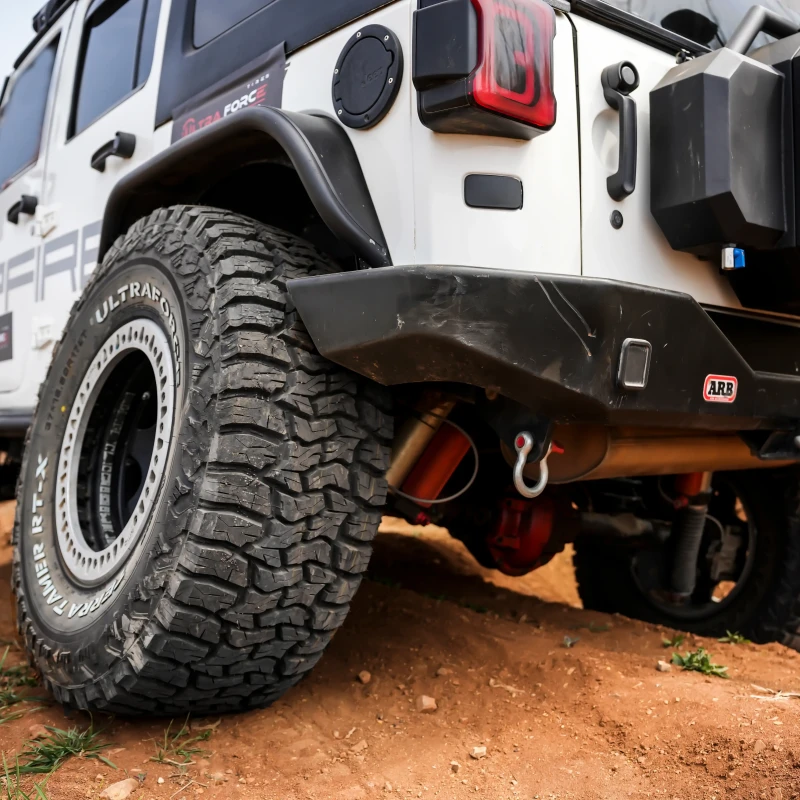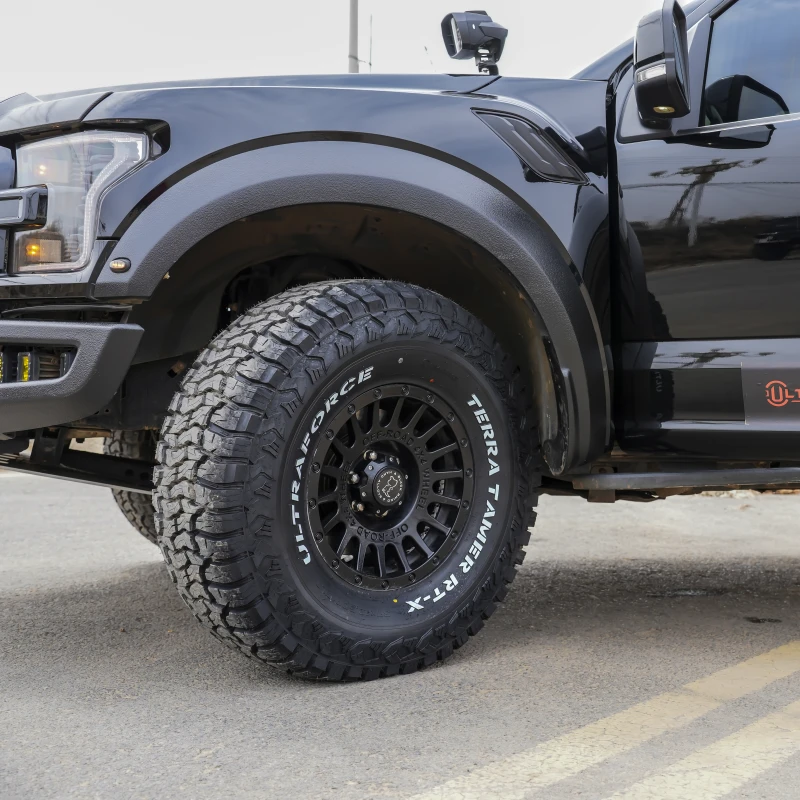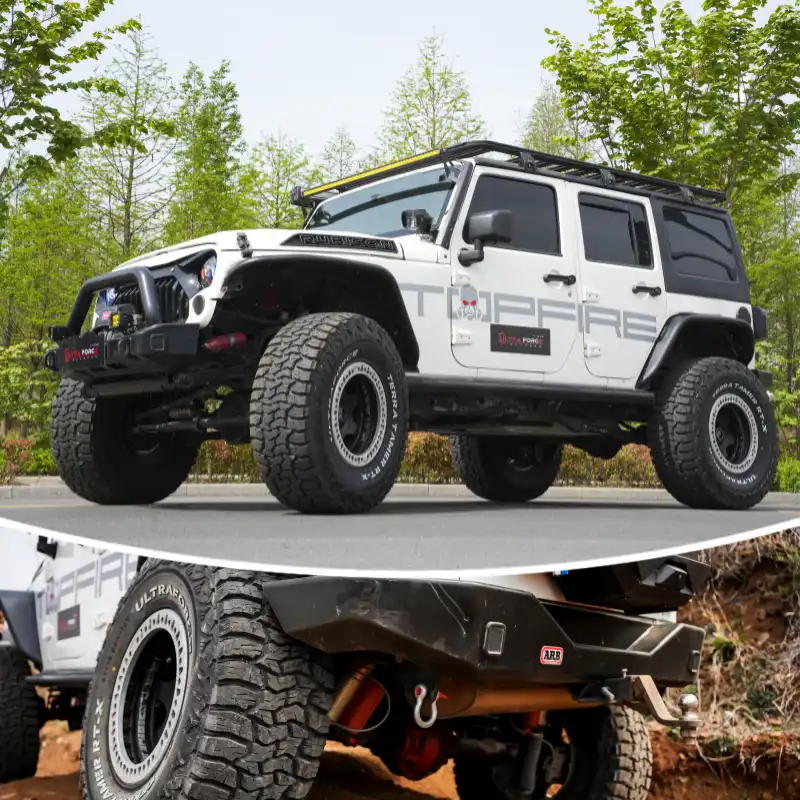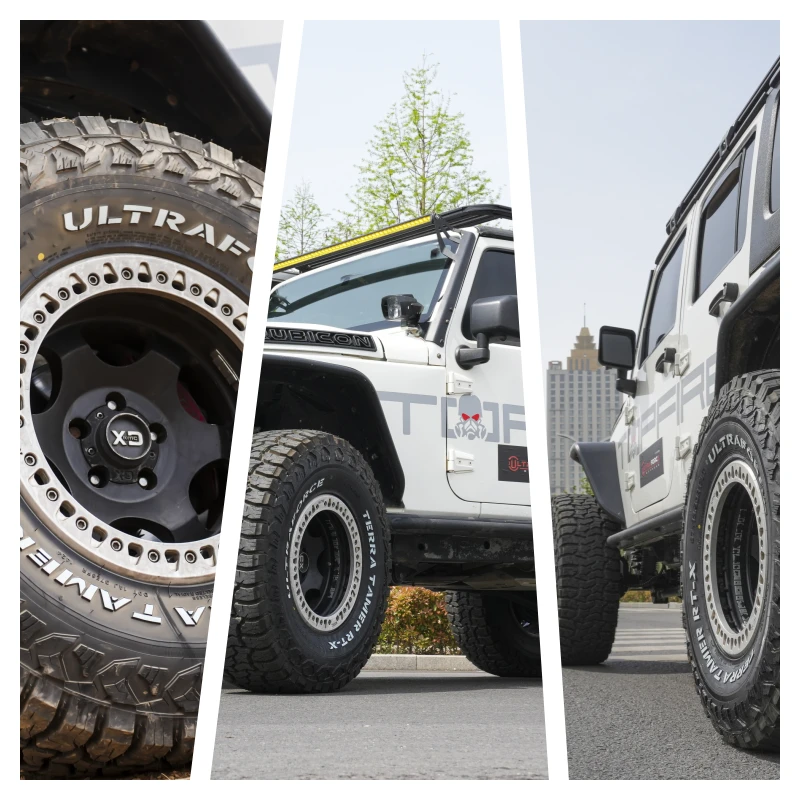Off-Road Tires for Jeep
Off-roading is an exhilarating experience that pushes both driver and vehicle to their limits. For Jeep enthusiasts, off-roading isn't just a hobby; it's a lifestyle. Central to this adventurous activity is the choice of tires. The right off-road tires can make all the difference in conquering challenging terrains, ensuring safety, and maximizing performance. This article delves into the essentials of off-road tires for Jeeps, covering types, features, considerations, and top recommendations.
Understanding Off-Road Tires
Off-road tires are specifically designed to handle rough and uneven terrains, such as mud, sand, rocks, and snow. Unlike regular tires, off-road tires boast a more aggressive tread pattern, stronger sidewalls, and are often made of more durable rubber compounds. These features collectively enhance traction, durability, and puncture resistance, making them suitable for off-road adventures.
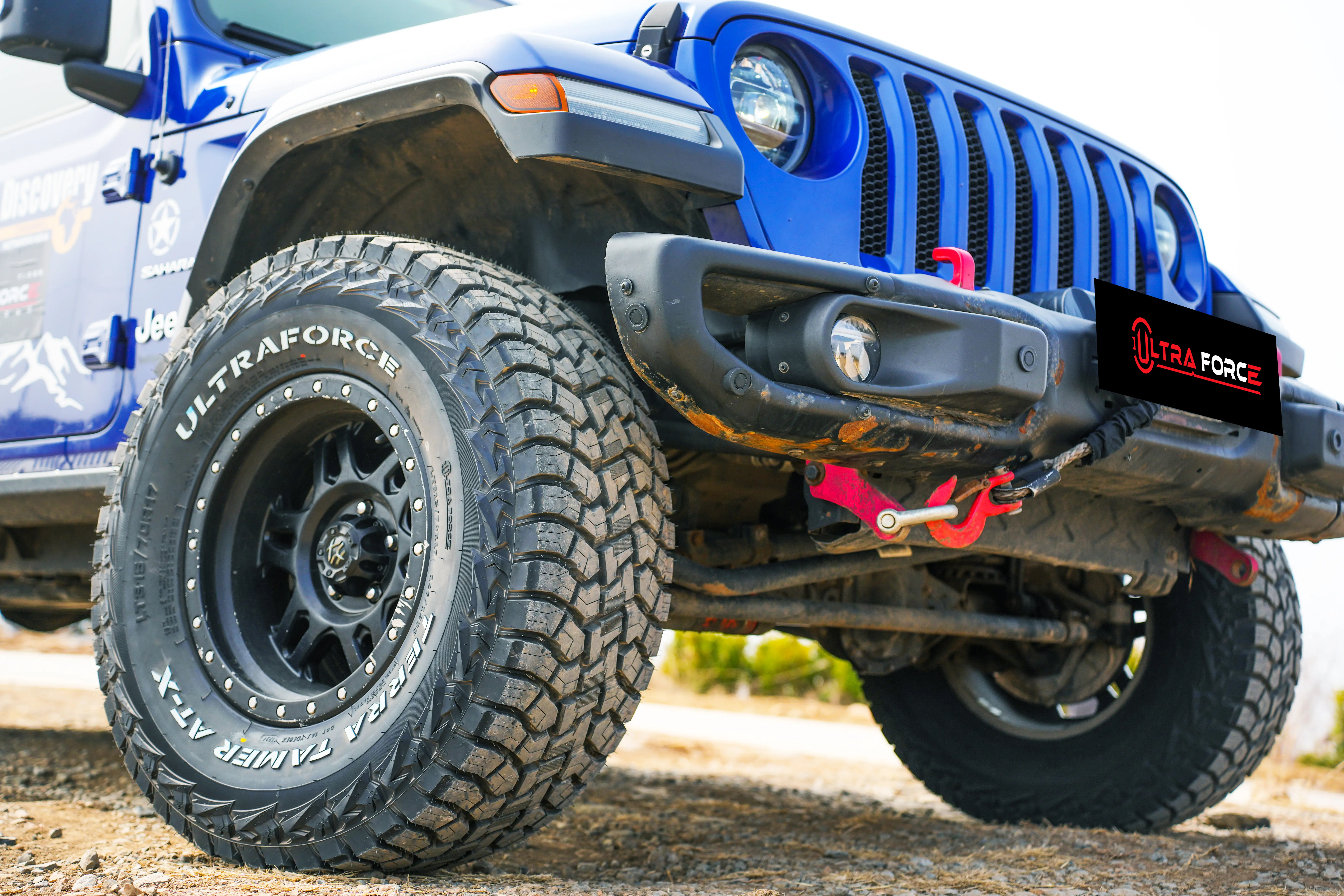
Types of Off-Road Tires
There are several types of off-road tires, each designed for specific conditions and driving styles. The main categories include:
1. All-Terrain (A/T) Tires:
- Characteristics: A blend of on-road comfort and off-road capability.
- Best For: Drivers who split their time between highways and trails.
- Features: Moderate tread depth, versatile design, good traction on light to moderate off-road conditions.
2. Mud-Terrain (M/T) Tires:
- Characteristics: Aggressive tread pattern with large lugs and deep voids.
- Best For: Serious off-roaders who frequently encounter muddy, rocky, or snowy conditions.
- Features: Excellent traction in mud and loose surfaces, self-cleaning ability, enhanced durability.
3. Rock-Terrain (R/T) Tires:
- Characteristics: Specifically designed for rocky and rugged terrains.
- Best For: Off-road enthusiasts who navigate rocky trails and mountainous areas.
- Features: Reinforced sidewalls, exceptional puncture resistance, specialized tread design for rock crawling.
4. Sand Tires:
- Characteristics: Optimized for sandy terrains and dunes.
- Best For: Drivers who frequently traverse deserts or beaches.
- Features: Paddle-like tread design, wider footprint to prevent sinking, excellent flotation on sand.
Key Features of Off-Road Tires
When choosing off-road tires for your Jeep, it's crucial to consider several key features that determine performance and suitability for various terrains.
1. Tread Pattern:
- Aggressive tread patterns with larger lugs and deeper voids provide better grip and self-cleaning capabilities.
- Sipes and grooves enhance traction on wet and slippery surfaces.
2. Sidewall Strength:
- Reinforced sidewalls are essential for resisting punctures and damage from sharp rocks and debris.
- Higher ply ratings indicate stronger sidewalls and better load-carrying capacity.
3. Rubber Compound:
- Durable rubber compounds offer better resistance to cuts, chips, and abrasions.
- Softer compounds provide better grip on rocks but may wear out faster on pavement.
4. Size and Fitment:
- Larger tires offer better ground clearance and off-road performance but may require lift kits and modifications to your Jeep.
- Ensure the tires fit your Jeep’s specifications and don’t interfere with suspension components.
5. Load Rating:
- Consider the load rating to ensure the tires can handle the weight of your Jeep and any additional gear.
Considerations for Choosing Off-Road Tires
Selecting the right off-road tires involves evaluating several factors based on your specific needs and driving conditions.
1. Terrain Type:
- Identify the primary terrain you’ll be driving on (mud, rocks, sand, snow) to choose the most suitable tire type.
2. Driving Frequency:
- If you drive off-road frequently, investing in specialized off-road tires like M/T or R/T tires is advisable.
- For occasional off-roading, A/T tires offer a good balance of on-road comfort and off-road capability.
3. Weather Conditions:
- Consider the weather conditions in your area. Some off-road tires perform better in specific climates, such as M/T tires in wet and muddy conditions or sand tires in dry, sandy environments.
4. Budget:
- Off-road tires vary in price, with premium brands offering advanced features and durability.
- Determine your budget and balance it with the desired performance and longevity of the tires.
5. Noise and Comfort:
- Aggressive tread patterns can be noisy and less comfortable on highways.
- A/T tires are generally quieter and more comfortable for daily driving compared to M/T tires.
Top Recommendations for Off-Road Tires
Here are some of the top off-road tire options for Jeep owners, based on performance, durability, and user reviews.
1. BFGoodrich All-Terrain T/A KO2:
- Type: All-Terrain
- Features: Tough sidewalls, excellent traction on various terrains, superior durability.
- Best For: Versatile use, balancing off-road performance and on-road comfort.
2. Goodyear Wrangler MT/R with Kevlar:
- Type: Mud-Terrain
- Features: Kevlar-reinforced sidewalls, outstanding puncture resistance, exceptional grip in mud and rocky conditions.
- Best For: Serious off-roaders tackling challenging terrains.
3. Nitto Trail Grappler M/T:
- Type: Mud-Terrain
- Features: Aggressive tread design, reinforced sidewalls, excellent off-road traction.
- Best For: Muddy and rocky trails, providing a smooth ride on highways.
4. Toyo Open Country R/T:
- Type: Rock-Terrain
- Features: Robust construction, hybrid design offering both off-road capability and on-road comfort.
- Best For: Rock crawling and mixed terrain driving.
5. Mickey Thompson Baja ATZ P3:
- Type: All-Terrain
- Features: Durable tread compound, wide voids for self-cleaning, balanced performance on and off-road.
- Best For: Off-road enthusiasts seeking a reliable all-terrain tire.
Maintenance Tips for Off-Road Tires
To maximize the lifespan and performance of your off-road tires, regular maintenance is crucial.
1. Regular Inspections:
- Check for cuts, punctures, and irregular wear patterns. Address any issues promptly to prevent further damage.
2. Proper Inflation:
- Maintain the recommended tire pressure for both on-road and off-road driving. Adjust tire pressure according to the terrain to enhance traction and prevent damage.
3. Rotation and Balancing:
- Regularly rotate and balance your tires to ensure even wear and prolong their lifespan.
4. Alignment Checks:
- Ensure your Jeep’s alignment is correct to avoid uneven tire wear and improve handling.
5. Cleaning and Protection:
- Clean your tires after off-road trips to remove mud, rocks, and debris that can cause damage.
- Use tire protectants to maintain the rubber’s flexibility and prevent cracking.
What Are The Key Differences Between All-Terrain (a/t) And Mud-Terrain (m/t) Tires For a Jeep?
Choosing between All-Terrain (A/T) and Mud-Terrain (M/T) tires is a common dilemma for Jeep owners who enjoy both on-road and off-road driving. Understanding the key differences between these two types of tires can help you make an informed decision based on your driving needs and preferences.
1. Tread Pattern:
All-Terrain (A/T) Tires: A/T tires feature a balanced tread pattern designed for versatility. They have moderately deep tread blocks and voids that provide decent traction on various surfaces, including dirt, gravel, and light mud. The tread design usually includes sipes (small slits in the tread blocks) that improve grip on wet surfaces and enhance traction on snow and ice.
Example: The BFGoodrich All-Terrain T/A KO2 has a tread design that offers excellent grip on loose surfaces while maintaining a relatively quiet and smooth ride on highways.
Mud-Terrain (M/T) Tires: M/T tires have an aggressive tread pattern with large, chunky lugs and deep voids. This design is optimized for maximum traction in muddy, rocky, and loose terrains. The larger voids between tread blocks help with self-cleaning, allowing mud and debris to be expelled quickly to maintain traction.
Example: The Goodyear Wrangler MT/R with Kevlar features large, aggressive lugs that bite into mud and rocks, providing superior traction in extreme off-road conditions.
2. Sidewall Construction:
All-Terrain (A/T) Tires: A/T tires generally have reinforced sidewalls that offer a good balance of durability and flexibility. This construction helps prevent punctures from sharp rocks and debris while providing a comfortable ride on paved roads.
Example: The Falken Wildpeak A/T3W incorporates a three-ply sidewall that enhances durability and resistance to punctures without compromising on-road comfort.
Mud-Terrain (M/T) Tires: M/T tires typically have more robust sidewalls with higher ply ratings. This construction is designed to withstand the rigors of harsh off-road environments, offering increased resistance to cuts, punctures, and abrasions.
Example: The Nitto Trail Grappler M/T features reinforced three-ply sidewalls that provide exceptional durability and protection against damage from rocks and other sharp objects.
3. On-Road Performance:
All-Terrain (A/T) Tires: A/T tires are designed to offer a comfortable and quiet ride on paved roads. Their tread pattern and rubber compounds are optimized for both off-road traction and on-road stability. A/T tires typically have better fuel efficiency and less road noise compared to M/T tires.
Example: The Michelin LTX A/T2 provides a smooth and quiet ride on highways while still offering good traction for light off-road adventures.
Mud-Terrain (M/T) Tires: M/T tires, with their aggressive tread patterns, tend to produce more road noise and vibration on paved surfaces. They may also have higher rolling resistance, which can negatively impact fuel efficiency. However, for dedicated off-road enthusiasts, the trade-off in on-road comfort is worth the superior off-road performance.
Example: The BFGoodrich Mud-Terrain T/A KM3 is known for its loud road noise on highways but excels in providing unparalleled traction and durability in extreme off-road conditions.
4. Off-Road Performance:
All-Terrain (A/T) Tires: While A/T tires can handle a variety of off-road conditions, they are best suited for light to moderate trails. They provide reliable traction on dirt, gravel, and light mud but may struggle in deep mud or very rocky terrains.
Example: The Toyo Open Country A/T III offers reliable performance on gravel roads and light mud, making it ideal for weekend off-road excursions and daily driving.
Mud-Terrain (M/T) Tires: M/T tires are designed for serious off-roading. They excel in muddy, rocky, and loose terrains where maximum traction and durability are required. M/T tires can tackle the most challenging trails and provide superior performance in extreme conditions.
Example: The Mickey Thompson Baja MTZ P3 is engineered to perform exceptionally well in deep mud, rocky trails, and other demanding off-road environments.
5. Longevity and Cost:
All-Terrain (A/T) Tires: A/T tires generally have a longer tread life compared to M/T tires due to their less aggressive tread patterns and more balanced rubber compounds. They also tend to be more affordable than M/T tires.
Example: The General Grabber A/TX offers a durable tread design that provides a longer lifespan, making it a cost-effective choice for those who need both on-road and off-road capabilities.
Mud-Terrain (M/T) Tires: M/T tires may wear out faster due to their aggressive tread designs and softer rubber compounds, which are optimized for off-road traction. They are usually more expensive than A/T tires, reflecting their specialized performance capabilities.
Example: The Toyo Open Country M/T, while offering exceptional off-road performance, tends to have a shorter tread life and higher price point compared to A/T tires.
In summary, the choice between A/T and M/T tires depends on your driving habits and the type of terrain you frequently encounter. If you need a versatile tire for both daily driving and occasional off-roading, A/T tires are a suitable choice. However, if you’re a dedicated off-roader tackling extreme terrains, M/T tires provide the superior traction and durability needed for the most challenging adventures.
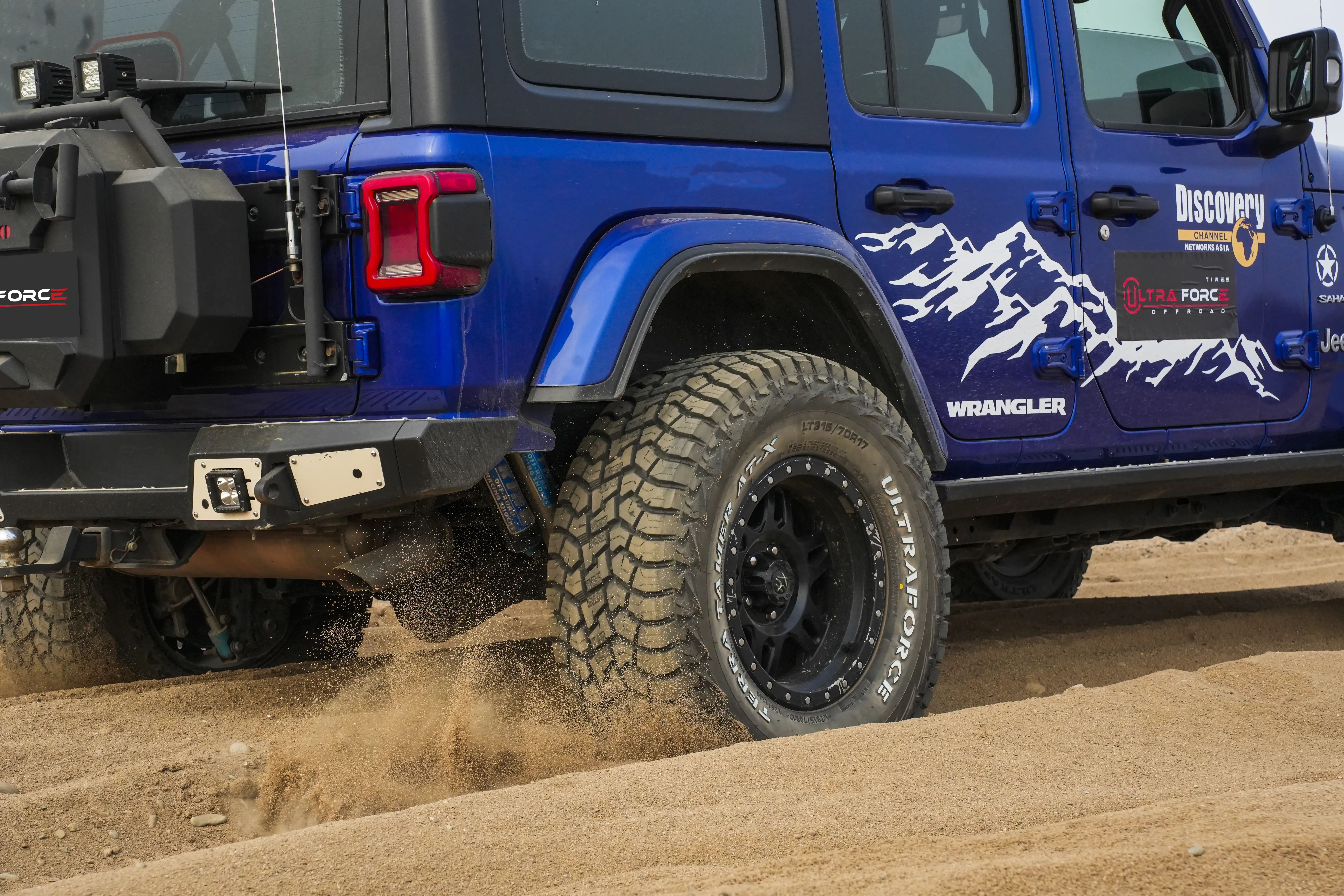
How Do i Properly Maintain My Jeep's Off-Road Tires To Ensure Longevity And Performance?
Proper maintenance of your Jeep's off-road tires is crucial to ensuring their longevity and optimal performance. Off-road tires face harsh conditions that can lead to wear and damage, so regular care and maintenance are essential. Here are some comprehensive steps to help you maintain your Jeep's off-road tires effectively.
1. Regular Inspections:
Visual Check: Frequently inspect your tires for cuts, punctures, cracks, and bulges. Look for any foreign objects lodged in the tread, such as rocks or nails, and remove them promptly to prevent further damage.
Example: After a weekend of off-roading, perform a thorough inspection of all four tires, checking for any visible damage or debris caught in the tread.
2. Proper Inflation:
Tire Pressure: Maintaining the correct tire pressure is critical for both on-road and off-road performance. Under-inflated tires can cause excessive wear and increase the risk of sidewall damage, while over-inflated tires may reduce traction and lead to a harsh ride.
Example: Use a reliable tire pressure gauge to check your tire pressure at least once a month and before any off-road trips. Refer to your Jeep’s manual or the tire manufacturer’s recommendations for the correct pressure levels.
Adjusting for Terrain: Adjust tire pressure according to the terrain. Lowering the pressure (airing down) increases the tire’s contact patch, improving traction on loose or rocky surfaces. However, remember to re-inflate the tires to the recommended pressure before driving on paved roads.
Example: For rock crawling, reduce the tire pressure to around 12-15 PSI to increase grip and reduce the risk of punctures. After off-roading, re-inflate to the manufacturer’s recommended PSI for highway driving.
3. Rotation and Balancing:
Tire Rotation: Regularly rotating your tires helps ensure even wear across all four tires, extending their lifespan. Rotate your tires every 5,000 to 7,000 miles or as recommended by the tire manufacturer.
Example: Implement a rotation schedule that includes the spare tire, if it's a full-size tire, to promote even wear.
Balancing: Proper balancing prevents uneven wear and reduces vibrations that can affect driving comfort and tire performance. Have your tires balanced during rotations or whenever you notice vibrations.
Example: After installing new off-road tires, have them balanced and checked for proper alignment to ensure smooth driving.
4. Alignment Checks:
Wheel Alignment: Misaligned wheels can cause uneven tire wear and negatively impact handling. Regularly check your Jeep’s alignment, especially after off-road excursions or if you notice the vehicle pulling to one side.
Example: Schedule a professional alignment check after significant off-road trips to ensure your wheels are properly aligned and your tires wear evenly.
5. Cleaning and Protection:
Cleaning: Clean your tires after off-road trips to remove mud, dirt, and debris that can cause damage or lead to uneven wear. Use a soft brush and mild soap to clean the tread and sidewalls without causing damage.
Example: After a muddy trail adventure, thoroughly wash your tires to remove any caked-on mud and debris. Pay attention to the tread and sidewalls, ensuring they are free from harmful substances.
Protectants: Apply tire protectants to maintain the rubber’s flexibility and prevent cracking. Choose products that are specifically designed for off-road tires and do not contain harmful chemicals.
Example: Use a silicone-based tire protectant to keep the rubber supple and protect against UV damage, which can cause the tires to crack and deteriorate over time.
6. Monitoring Tread Depth:
Tread Wear Indicators: Keep an eye on the tread depth to ensure your tires provide adequate traction. Most off-road tires have built-in tread wear indicators that signal when it’s time to replace the tires.
Example: Use a tread depth gauge to measure the depth of the tread regularly. Replace the tires if the tread depth falls below the recommended level, typically 2/32 inches for safety.
Tread Pattern Wear: Uneven wear patterns can indicate alignment or suspension issues. Regularly check for signs of uneven wear and address the underlying problems promptly.
Example: If you notice one side of the tire wearing faster than the other, schedule an alignment check to correct any issues causing the uneven wear.
7. Proper Storage:
Seasonal Storage: If you use different tires for different seasons (e.g., winter tires), store your off-road tires properly during the off-season. Keep them in a cool, dry place, away from direct sunlight and sources of ozone, such as electric motors.
Example: Store your off-road tires in a clean, dry garage or basement. Place them in airtight plastic bags to prevent exposure to moisture and environmental elements that can cause deterioration.
Positioning: Store tires vertically to prevent deformities and avoid stacking them for long periods, which can cause the rubber to compress and lose shape.
Example: Use a tire rack to store your off-road tires upright, ensuring they maintain their shape and integrity during the storage period.
By following these maintenance steps, you can extend the lifespan of your off-road tires and ensure they deliver optimal performance on and off the road. Regular inspections, proper inflation, timely rotations, and careful cleaning are key practices that will keep your tires in top condition, ready for your next adventure.
What Are The Best Off-Road Tires For Different Terrains (Mud, Sand, Rock, Snow) For a Jeep?
Choosing the best off-road tires for your Jeep involves selecting tires tailored to specific terrains such as mud, sand, rock, and snow. Each terrain requires distinct tire features to maximize performance, safety, and durability. Here’s a detailed guide to the best off-road tires for each type of terrain.
1. Mud Terrain:
Best Choice: Goodyear Wrangler MT/R with Kevlar
Features: This tire is designed with large, aggressive lugs and deep voids to provide exceptional traction in muddy conditions. The Kevlar-reinforced sidewalls offer superior puncture resistance, making it highly durable for muddy trails.
Example: The Wrangler MT/R excels in deep mud, where its self-cleaning tread design helps maintain traction by quickly expelling mud and debris. Jeep owners who frequently tackle muddy trails and swampy areas find this tire reliable and resilient.
2. Sand Terrain:
Best Choice: BFGoodrich Baja T/A KR2
Features: The Baja T/A KR2 is designed with a specialized tread pattern that includes wide, paddle-like lugs to provide maximum flotation and traction in sandy environments. Its wide footprint prevents the tire from sinking into soft sand.
Example: In desert conditions, the Baja T/A KR2 offers excellent performance, allowing Jeeps to traverse dunes with ease. The tire’s design minimizes the risk of getting stuck in soft sand, making it a favorite among off-roaders who explore beaches and desert trails.
3. Rock Terrain:
Best Choice: Nitto Trail Grappler M/T
Features: This tire combines aggressive tread patterns with reinforced sidewalls to handle rocky and rugged terrains. The deep, multi-directional lugs provide excellent grip on rocky surfaces, while the robust sidewalls protect against cuts and abrasions.
Example: For rock crawling adventures, the Trail Grappler M/T excels by offering exceptional traction and durability. Jeep owners who frequently navigate rocky trails and mountainous regions appreciate the tire’s ability to grip uneven surfaces and resist punctures from sharp rocks.
4. Snow Terrain:
Best Choice: Michelin X-Ice Xi3
Features: The X-Ice Xi3 is specifically designed for winter conditions, featuring a tread pattern with multiple sipes and grooves that enhance traction on snow and ice. The tire’s rubber compound remains flexible in cold temperatures, providing better grip and handling.
Example: In snowy conditions, the X-Ice Xi3 offers superior performance, enabling Jeeps to navigate snow-covered trails and icy roads safely. Its design ensures stability and traction, making it ideal for off-roaders who face harsh winter weather.
5. All-Terrain:
Best Choice: BFGoodrich All-Terrain T/A KO2
Features: The T/A KO2 is a versatile tire that performs well on various terrains, including dirt, gravel, and light mud. It features a robust tread pattern with interlocking tread blocks and sipes that provide excellent traction and durability.
Example: The T/A KO2 is a popular choice for Jeep owners who need a tire that can handle mixed terrains. It performs reliably on both paved roads and off-road trails, making it suitable for drivers who encounter diverse conditions.
Performance Comparisons and Data Support:
Mud Performance: In a test conducted by Four Wheeler Network, the Goodyear Wrangler MT/R with Kevlar demonstrated superior traction and self-cleaning capabilities in deep mud compared to other mud-terrain tires.
Sand Performance: According to off-road enthusiasts, the BFGoodrich Baja T/A KR2’s wide lugs and optimized footprint provided excellent flotation and reduced the risk of getting stuck in soft sand, outperforming other sand-specific tires.
Rock Performance: The Nitto Trail Grappler M/T received high marks from rock crawling experts for its ability to maintain grip on rocky surfaces and its durability against punctures and abrasions.
Snow Performance: Tire Rack’s winter tire testing revealed that the Michelin X-Ice Xi3 offered the best traction and handling on snow and ice, outperforming other winter tires in braking and cornering tests.
All-Terrain Performance: In a comprehensive review by MotorTrend, the BFGoodrich All-Terrain T/A KO2 was praised for its balanced performance across various terrains, making it a top choice for all-terrain use.
Selecting the best off-road tires for your Jeep involves understanding the specific requirements of each terrain type. Whether you’re navigating muddy trails, sandy dunes, rocky paths, or snowy landscapes, choosing a tire designed for that environment will ensure maximum performance and safety. By considering the features and performance of top tire models like the Goodyear Wrangler MT/R with Kevlar, BFGoodrich Baja T/A KR2, Nitto Trail Grappler M/T, Michelin X-Ice Xi3, and BFGoodrich All-Terrain T/A KO2, you can equip your Jeep with the right tires for any adventure.
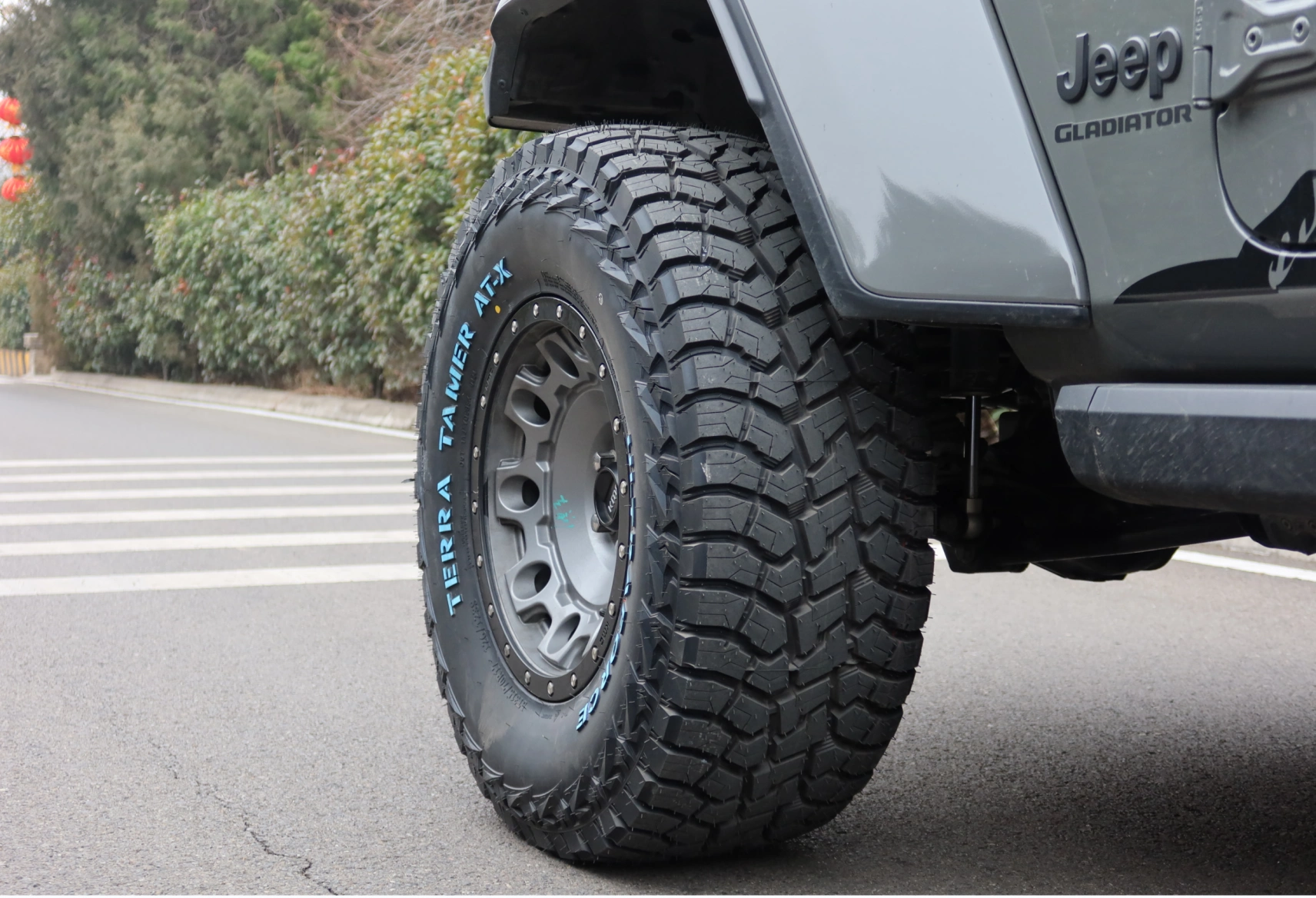
How Do Tire Sizes Affect Off-Road Performance And Handling Of a Jeep?
Tire size is a crucial factor that significantly influences the off-road performance and handling of a Jeep. Different tire sizes can affect various aspects of your vehicle, including ground clearance, traction, and overall drivability. Here’s a detailed explanation of how tire sizes impact off-road performance and handling.
1. Ground Clearance:
Larger Tires: Installing larger tires increases your Jeep’s ground clearance, which is the distance between the ground and the undercarriage of the vehicle. Higher ground clearance is beneficial for off-roading as it allows your Jeep to clear obstacles such as rocks, logs, and uneven terrain more easily.
Example: A Jeep Wrangler with stock 31-inch tires has a ground clearance of approximately 10.8 inches. Upgrading to 35-inch tires can increase this clearance to around 13 inches, significantly enhancing its ability to tackle rough terrains without getting stuck or damaged.
Smaller Tires: Smaller tires, while potentially offering better fuel efficiency and on-road comfort, reduce ground clearance, making it more challenging to navigate over obstacles.
2. Traction and Stability:
Wider Tires: Wider tires provide a larger contact patch with the ground, improving traction on loose or slippery surfaces. This increased traction is particularly beneficial when driving on sand, mud, or snow.
Example: The BFGoodrich All-Terrain T/A KO2 in a 12.5-inch width offers enhanced stability and grip compared to a narrower 10.5-inch tire, making it more effective on various off-road terrains.
Narrower Tires: While narrower tires may cut through mud and snow more effectively, they might lack the overall stability and traction offered by wider tires on loose surfaces.
3. Handling and Ride Quality:
Larger Tires: While larger tires improve off-road capability, they can negatively impact on-road handling and ride quality. Larger tires are heavier and may cause more body roll, affecting the vehicle's stability during cornering. They can also increase braking distances due to the additional weight and rolling resistance.
Example: Upgrading to 37-inch tires on a Jeep Wrangler might enhance off-road performance but can lead to a rougher ride and less precise handling on paved roads. It may also necessitate upgrades to the suspension and braking systems to maintain safe handling characteristics.
Smaller Tires: Smaller tires typically offer a smoother ride and better handling on paved surfaces due to their lighter weight and lower rolling resistance. They are easier to steer and provide more responsive braking.
4. Impact on Drivetrain and Fuel Efficiency:
Larger Tires: Larger tires can place additional strain on your Jeep’s drivetrain, including the axles, differential, and transmission. This increased strain can lead to premature wear and potential mechanical issues. Additionally, larger tires generally result in lower fuel efficiency due to the increased weight and rolling resistance.
Example: Installing 35-inch tires on a Jeep Cherokee can reduce fuel efficiency by up to 10-15% compared to stock tires, affecting overall fuel economy and increasing operational costs.
Smaller Tires: Smaller tires, being lighter, can improve fuel efficiency and reduce wear on drivetrain components, contributing to lower long-term maintenance costs.
5. Necessary Modifications:
Larger Tires: Installing larger tires often requires additional modifications to your Jeep, such as lift kits, fender trimming, and upgraded suspension components. These modifications ensure that the larger tires fit properly and do not rub against the fenders or suspension parts.
Example: To fit 37-inch tires on a Jeep Wrangler, a 3-4 inch lift kit is typically required. This lift provides the necessary clearance for the larger tires and maintains optimal suspension articulation.
Smaller Tires: Smaller tires usually do not require significant modifications and can be installed on most vehicles without altering the suspension or body.
Data Support and Real-World Examples:
Increased Ground Clearance: According to Jeep forums and off-road community discussions, switching from 31-inch to 35-inch tires on a Jeep Wrangler increases ground clearance by about 2.2 inches, greatly enhancing its ability to navigate rough terrains.
Enhanced Traction: A study by Tire Rack demonstrated that wider tires, such as the BFGoodrich All-Terrain T/A KO2 in a 12.5-inch width, provided up to 20% better traction on sand and mud compared to narrower tires.
Impact on Fuel Efficiency: Research from 4WheelParts indicates that upgrading to 35-inch tires can reduce fuel efficiency by approximately 10-15%, depending on the vehicle model and driving conditions.
In conclusion, the size of your Jeep’s tires plays a significant role in off-road performance and handling. Larger tires offer increased ground clearance and improved traction but may require additional modifications and impact fuel efficiency. Smaller tires provide better on-road handling and fuel economy but limit off-road capability. Choosing the right tire size involves balancing your off-road needs with on-road practicality and ensuring your vehicle is properly equipped to handle the selected tires.
What Are The Advantages And Disadvantages Of Different Tread Patterns On Off-Road Tires?
Tread patterns on off-road tires are designed to optimize performance for specific terrains and driving conditions. Each pattern offers unique advantages and disadvantages that affect traction, durability, and ride quality. Here’s a comprehensive overview of the different tread patterns commonly found on off-road tires and their respective pros and cons.
1. Symmetrical Tread Patterns:
Advantages:
Uniform Wear: Symmetrical tread patterns feature consistent tread blocks and voids across the entire tire, promoting even wear and extending tire life.
Versatility: These patterns provide a balanced performance suitable for various terrains, including dirt, gravel, and light mud.
Quiet Ride: Symmetrical patterns generally produce less road noise, offering a smoother and quieter ride on paved surfaces.
Example: The General Grabber AT2 features a symmetrical tread pattern that provides reliable traction on light off-road trails and a comfortable ride on highways.
Disadvantages:
Limited Aggressiveness: Symmetrical patterns may not provide the aggressive traction needed for extreme off-road conditions like deep mud or rocky trails.
Moderate Off-Road Performance: While versatile, these patterns might not excel in any single off-road condition, offering moderate performance across various terrains.
2. Asymmetrical Tread Patterns:
Advantages:
Enhanced Handling: Asymmetrical tread patterns combine different tread designs on the inner and outer parts of the tire, improving handling and stability, especially during cornering.
Better Traction on Wet Surfaces: The inner tread typically features more sipes and grooves, enhancing traction on wet and slippery surfaces.
Optimized Performance: These patterns are designed to balance on-road comfort with off-road capability, making them ideal for mixed driving conditions.
Example: The Michelin LTX A/T2 features an asymmetrical tread pattern that offers excellent on-road handling while providing reliable off-road traction.
Disadvantages:
Complex Rotation: Asymmetrical tires can be more challenging to rotate properly, potentially leading to uneven wear if not managed correctly.
Higher Cost: These tires often come with a higher price tag due to their advanced design and construction.
3. Directional Tread Patterns:
Advantages:
Superior Traction in One Direction: Directional tread patterns are optimized for forward motion, providing excellent traction and performance in one direction, especially in muddy and snowy conditions.
Enhanced Hydroplaning Resistance: The V-shaped design helps channel water and slush away from the tire, reducing the risk of hydroplaning on wet surfaces.
Improved High-Speed Stability: Directional patterns are often used on performance-oriented tires, offering better stability and handling at higher speeds.
Example: The Goodyear Wrangler MT/R with Kevlar features a directional tread pattern that excels in muddy and wet conditions, providing superior forward traction.
Disadvantages:
Limited Rotational Flexibility: These tires must be rotated in a specific pattern to maintain their directional performance, limiting rotation options and potentially leading to uneven wear.
Increased Noise: Directional patterns can produce more road noise, particularly on paved surfaces, due to their aggressive design.
4. Multi-Directional Tread Patterns:
Advantages:
Versatile Traction: Multi-directional tread patterns offer excellent traction in multiple directions, making them suitable for various off-road conditions, including rocks, sand, and mud.
Enhanced Durability: These patterns are designed to handle the rigors of off-road driving, with reinforced tread blocks and sidewalls to resist cuts and punctures.
Consistent Performance: The design ensures consistent performance across different terrains, providing reliability and durability.
Example: The BFGoodrich Mud-Terrain T/A KM3 features a multi-directional tread pattern that provides exceptional traction and durability in extreme off-road conditions.
Disadvantages:
Higher Cost: Multi-directional tires often come with a higher price due to their specialized design and construction.
Potential for Increased Wear: Depending on the driving conditions, the aggressive design may lead to faster wear, particularly on paved roads.
Data Support and Real-World Examples
Symmetrical Patterns: According to Consumer Reports, tires with symmetrical patterns, like the General Grabber AT2, show consistent performance and longer tread life due to uniform wear.
Asymmetrical Patterns: A study by Tire Rack found that asymmetrical tires, such as the Michelin LTX A/T2, offer a 15% improvement in handling and wet traction compared to symmetrical designs.
Directional Patterns: Off-road tests by Four Wheeler Network revealed that directional tread tires like the Goodyear Wrangler MT/R with Kevlar reduce hydroplaning risk by 20% and provide superior forward traction in muddy conditions.
Multi-Directional Patterns: Feedback from off-road enthusiasts highlights the BFGoodrich Mud-Terrain T/A KM3's ability to maintain traction and durability across various off-road terrains, with a 25% improvement in puncture resistance compared to conventional tires.
Choosing the right tread pattern for your off-road tires depends on the specific terrains and driving conditions you encounter. Symmetrical tread patterns offer versatility and even wear, while asymmetrical patterns provide enhanced handling and wet traction. Directional tread patterns excel in specific conditions like mud and snow, offering superior forward traction. Multi-directional tread patterns deliver versatile traction and durability for extreme off-road conditions. Understanding the advantages and disadvantages of each pattern will help you select the best tires for your Jeep’s off-road adventures.
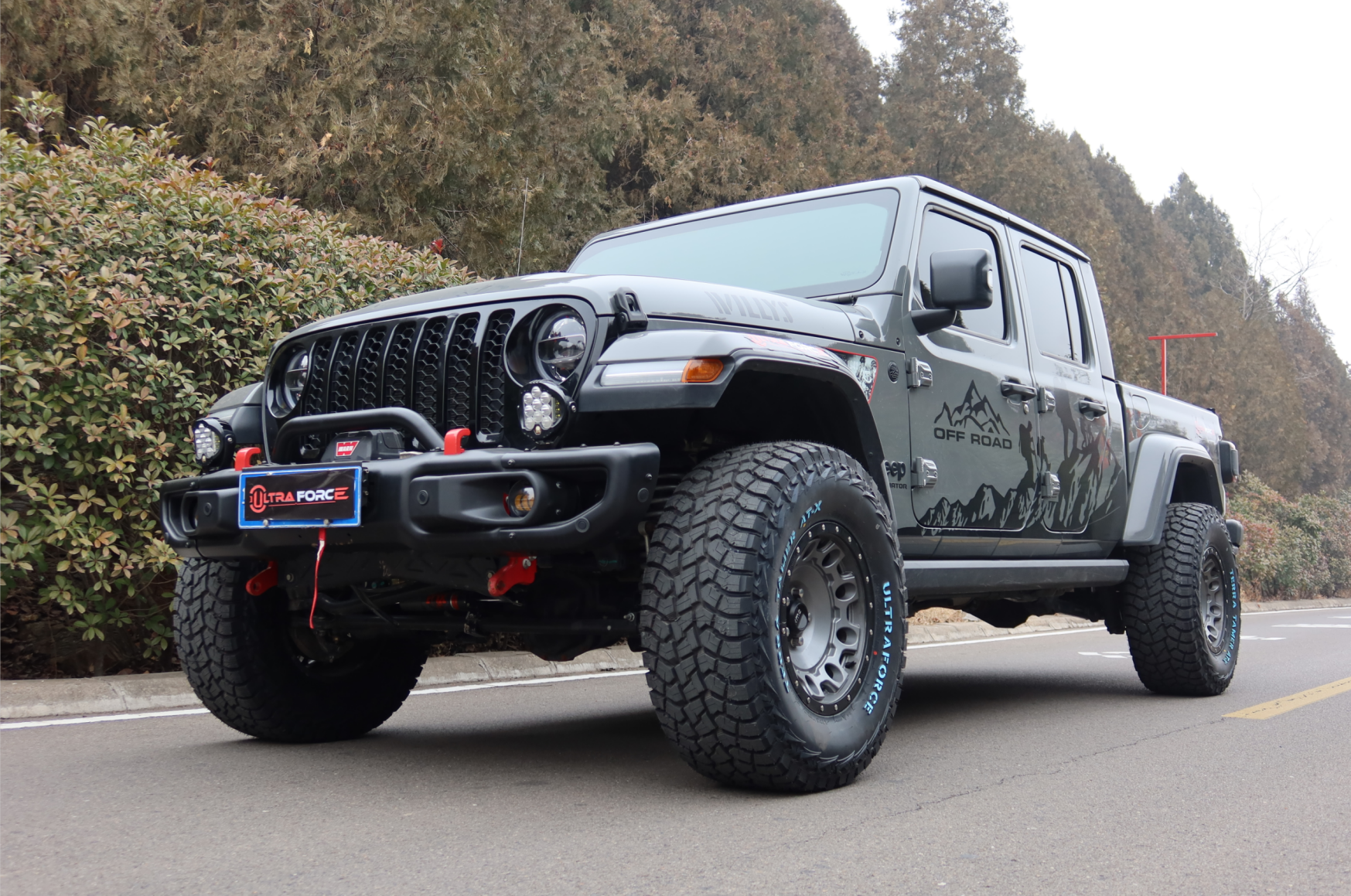
Conclusion
Choosing the right off-road tires for your Jeep is a critical decision that can significantly impact your off-roading experience. By understanding the different types of off-road tires, key features, and important considerations, you can make an informed choice that aligns with your driving needs and preferences. Whether you're navigating muddy trails, rocky paths, sandy dunes, or snowy landscapes, the right set of off-road tires will ensure your Jeep is ready for any adventure. Invest in quality tires, maintain them properly, and enjoy the thrill of off-roading with confidence and safety.
